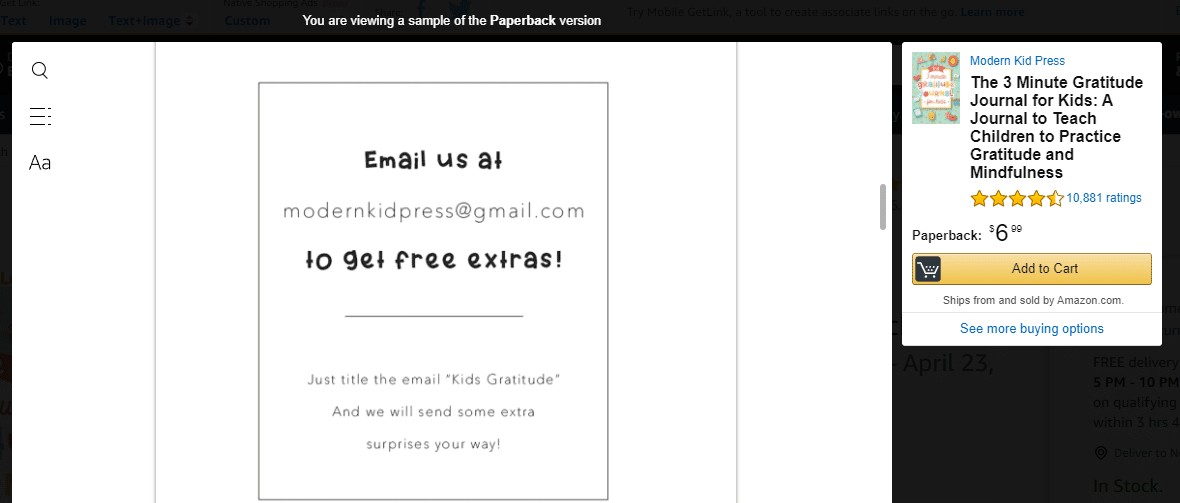
You already know that publishing print-on-demand (POD) no- and low-content books can be a long process. It entails thinking about your passive income gig as a long-term business adventure.
So, let’s say you’ve created your interiors and covers and done your keyword research. You think that you’re ready to sell. This is incorrect because it’s actually just the start of the process. Gaining traction, getting your book ranking higher in the search results, and making sales takes time, perseverance and effort.
One effective way you can boost this is with your after-sales customer service through reviews and ratings. But how can you get these gems for your store so that the Amazon algorithm ranks you higher?
Take a look below.
Why Do Ratings And Reviews Matter?
One of Amazon’s primary mottos is offering a great customer experience. The more happy customers there are, the better for the Sellers and Amazon. But how do you know which customers are happy and which ones aren’t? The answer lies in ratings and reviews. These are both an essential part of scaling your business. Think of this as word-of-mouth advertising, which was a crucial part of marketing communications before the internet took the world by storm.
Today, there are online reviews and ratings for practically every business you can think of. While positive reviews will have a higher chance of influencing people to purchase a product or service, negative ones can spread like wildfire, causing reputational damage.
The same is true for reviews on Amazon. In fact, one real-life review on Amazon proves this point best. As part of the review, this customer said: “I base most of my purchases on reviews from others.” This should put things in a nutshell regarding the importance of ratings and reviews. It is a major reason why you should be paying attention to them.
Sure, reviews aren’t as common as ratings, and some say that you’re likely to get about one rating for every 100 items sold. But the point is that they do matter and you need to know what to do in the event of either type of review.
What Is The Value Of Ratings And Reviews For Your Amazon KDP Game
We’ve established the importance of ratings and reviews, so now it’s time to state their business value.
Here’s a short list:
Establish credibility and social proof: People want third-party credibility; it influences their decision to buy.
Product validation: Ratings and reviews validate the product. They say that the product is worth purchasing.
Influence search algorithms: The Amazon algorithm is powerful and it takes ratings and reviews into account. This is in addition to several other factors, when ranking your product higher up. Reviews also show that your product has more staying power and this means Amazon is more likely to see it and rank it.
Part of marketing strategy: Ratings and reviews also help establish a sustainable marketing strategy, which Sellers can lean on to drive sales in the long term. Why? Because proof that some are happy with your products is likely to entice others to buy, too. In this sense, the very act of garnering positive ratings and reviews can be considered a successful marketing strategy.
Drive sales: Ultimately, with all these factors combined, you’re likely to make more sales with higher ratings and reviews. This is in contrast to Sellers who have no reviews or poor reviews.
What Actions Will Improve The Chances Of Getting High Ratings And Reviews?
The suggestions below are some effective ways of helping you improve your customer ratings and reviews on Amazon.
Build an email list: Building an email list cannot be underestimated. It is an essential part of your ratings and review strategy. You need to be emailing your customers. While most people think that emails are mainly for promotions and discounts, this is actually wrong. You can easily use your email list to ask your customers to rate you. One example of an Amazon Seller who implements a strategy of building an email list in an interesting way is Modern Kid Press. This Seller asks their customers to send an email to them (which is found in their low-content book) to get more cool free stuff. But this is actually also an excellent way of building an email list, too.
Launch a website or landing page: Having a separate website for your no- and low-content books is another marketing strategy. It can really help you build your brand. By offering your customers and visitors value, they’re more likely to leave their emails with you. This goes back to the previous point about building an email list. By using your website to your advantage, you can create a more cohesive brand, launch new products, and gather email addresses to reach a wider audience. This will help you not only strengthen your brand personality but you’ll be able to reach more customers, too.
Create a group and ask for reviews: According to Amazon’s rules, you can’t force someone to give you a good review, but you can ask for an honest review. And one way to do that is to create a group on social media and simply ask. This ties in with having a cohesive brand identity and voice. It also shows you care about your customers’ opinions. They’ll be able to differentiate when you’re being genuine versus when you’re simply soliciting for the sake of boosting your sales game.
Ask to have your book reviewed online: Yes, this is another strategy that you can adopt, although you should be aware that this can take time and money.
Add bonuses: It’s not against Amazon policy to add sweeteners to a deal in exchange for reviews in the form of certain offers. However, these reviews must be honest and any fake reviews will be removed. The platform is really strict about this.
Promote, promote, promote: The beauty of the internet is that it offers so many different channels for you to promote your KDP books for free. You can always create a YouTube channel and update it whenever you have a new book out. Then, of course, there is the wide variety of social media channels, which you can use to promote your books as well. Use these to your advantage – whether it be to ask for reviews or gain email addresses.
Improve based on negative feedback: Finally, there’s dealing with negative reviews or poor ratings. The important thing here is to use your customer’s feedback constructively. Say you’ve made some grammatical errors in your no- or low-content book and a nit-picky customer doesn’t like that. What can you do in such a case?
First and foremost, try to never invalidate the customer’s opinion and experiences. Make the most out of their feedback. You could, for example, mention that an updated version of the book is being worked on based on their comments and that you value their input. This will show all your present and future customers that you take reviews seriously. While some say you shouldn’t respond to reviews at all, the best advice is to be selective. If you do choose to respond, then use that feedback in a constructive manner to improve your offering.
What Not To Do To Gain Amazon Reviews
As with anything internet-related, there are some definite don’ts that Amazon will punish you for. Here are a couple of practices to avoid at all costs to ensure you don’t get a strike against your account.
Review swaps: “I’ll review yours if you review mine.” These are very easy to spot and Amazon will not be happy with this.
Pay for reviews: Customers want honest reviews and Amazon can spot a fake one a mile away. This is another no-no.
Review your own: Self-reviewed no- and low-content books will diminish your credibility as a Seller. Plus, it’s really easy to see when you’re tooting your own horn.
Get friends and family to review: Finally, avoid asking friends and family for reviews. Amazon can see which IP addresses you’ve used. This is because all they’re trying to do is make sure that reviews aren’t biased. Also, so that customers get a fair and honest review on which to base their purchasing decision.
What’s The Bottom Line?
These actionable steps are geared towards a couple of things. It’s an interrelated web of events and if put in practice effectively and simultaneously, they can yield a lot of good results for your passive income business.
For starters, the value of reviews and ratings for sales cannot be underestimated. More clients are looking to others’ experiences to see if they should make a purchase. If they’re convinced of the value of your product based on someone else’s opinion, you’re likely to bag that sale.
But that’s not all.
You’re also likely to be found higher up in the rankings, as the Amazon algorithm will crawl your listings and get you to a much sweeter spot. That will make it easier for your no- and low-content books to get found.



